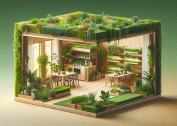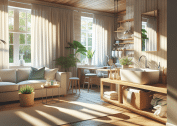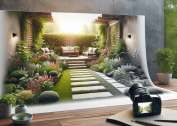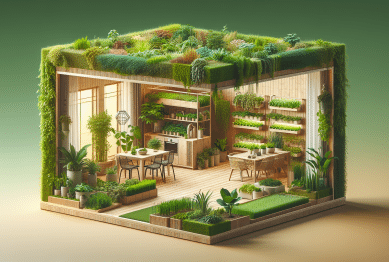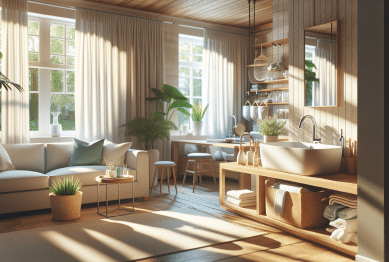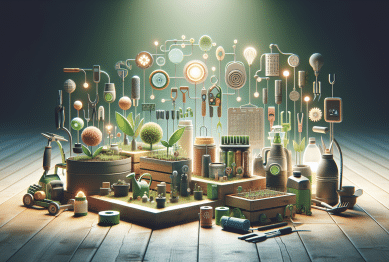Have you ever noticed how your creativity spikes in some rooms while it stalls in others? Or perhaps certain rooms make it easier for you to focus and complete tasks, while others leave you feeling distracted and drained. It’s not just in your head—scientific research supports the idea that the rooms we spend time in profoundly affect how we think, concentrate, and even feel. Room design, color psychology, lighting, and even furniture arrangement all play pivotal roles in determining how we process information and approach challenges. But what makes certain rooms stand out for boosting our mental clarity? Let’s explore the surprising science behind why we think better in certain rooms and how you can optimize your space to unlock your full mental potential.
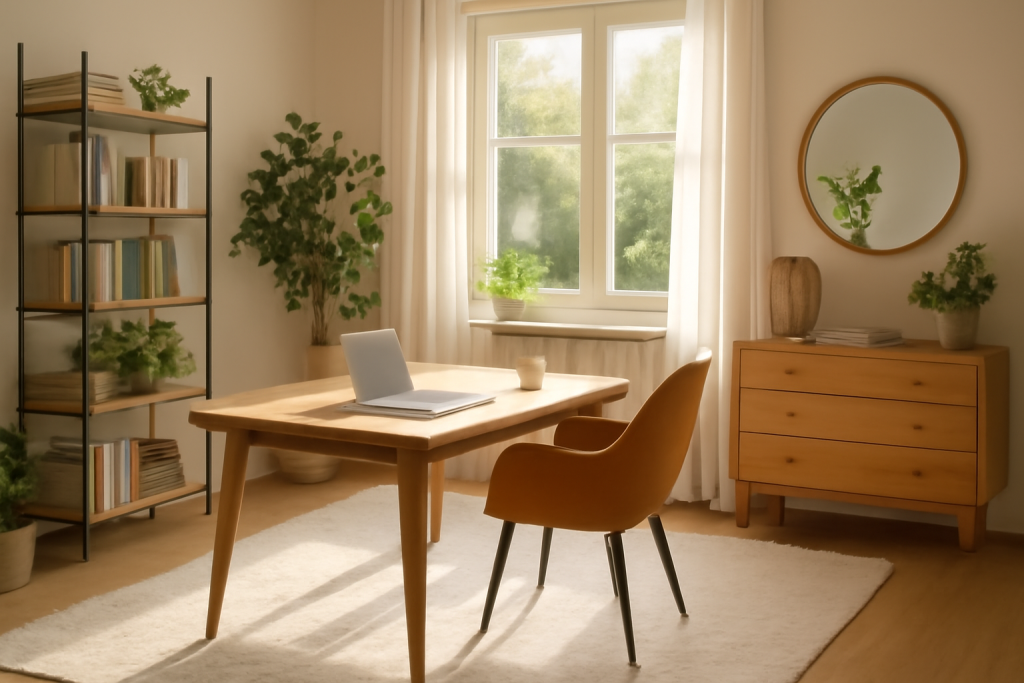
Why We Think Better in Certain Rooms: Unveiling the Power of Room Design and Mental Clarity
In a world increasingly obsessed with productivity and wellness, one question lingers in many people’s minds: Why do we think better in certain rooms? Whether it’s the cozy comfort of a living room, the bright energy of a home office, or the tranquil serenity of a bedroom, the spaces we inhabit have a powerful influence on our mental clarity and decision-making abilities. This article dives deep into the latest research and emerging trends, exploring how room design and environmental factors play an essential role in shaping our cognitive function and mental well-being.
1. How Natural Light in Rooms Enhances Cognitive Function
Lighting is one of the most important factors that can influence cognitive performance. Bright, natural light is known to elevate mood, improve focus, and even help regulate our circadian rhythms. In contrast, dim or harsh artificial lighting can leave us feeling sluggish or unfocused. According to a study published in Environmental Psychology, exposure to natural light increases concentration and productivity, while poor lighting can lead to mental fatigue and impaired judgment (Heschong Mahone Group 2021).
For instance, rooms with abundant natural light, like sunrooms or well-lit living areas, can stimulate our brains, making it easier to focus and think creatively. Conversely, spaces with little to no natural light, such as windowless offices, may have the opposite effect. To maximize mental clarity, it’s essential to prioritize natural light where possible. Consider using large windows or light-colored curtains to allow more sunlight into your space, and if natural light is limited, artificial light with a cooler color temperature can help mimic the effects of daylight.
2. The Role of Color in Rooms: Boosting Focus and Creativity
The colors of the rooms we occupy are far more than mere aesthetic choices—they significantly affect our emotions and mental performance. According to color psychology, certain colors can promote relaxation, creativity, focus, or even energy. For example, blue is known to be a calming color that enhances concentration, making it ideal for study rooms or offices. On the other hand, red is often associated with increased energy and alertness, but too much red can lead to feelings of aggression or stress (Wexner 2020).
Other colors, like green and yellow, have been found to improve creativity and problem-solving skills. Research indicates that exposure to green environments boosts creativity and mental clarity (Nakata et al., 2019). So, if you want to enhance your mental performance, think carefully about the colors in your space. For workspaces or study areas, opting for calming blues or stimulating greens could make a significant difference in your ability to think clearly.
3. Furniture Layout in Rooms: Why Arrangement Matters for Mental Clarity
The arrangement of furniture in a room is another key factor that affects mental clarity and cognitive function. A cluttered, cramped space can make it difficult to think clearly and focus. On the other hand, well-organized spaces with a clear flow allow for better mental flow, promoting focus and productivity. Feng Shui, an ancient Chinese practice of arranging the environment to enhance energy flow, has long emphasized the importance of furniture arrangement in improving mental clarity. By creating a sense of openness and balance in a room, you can foster a more focused and positive mental state.
Research in spatial design also supports this idea, showing that people in environments with minimal clutter tend to experience lower levels of stress and anxiety. A study in Psychology Today found that individuals who worked in tidy, organized rooms had improved performance and were more likely to complete tasks efficiently (Parker 2021). By ensuring that your workspace is free from distractions and maintaining an organized layout, you can set yourself up for mental clarity and productivity.
4. Acoustic Design: Why Quiet Rooms Improve Your Thinking
Sound can have a profound effect on our ability to concentrate and think clearly. While some people thrive in bustling environments, others find that noise is a major distraction. Research has shown that background noise can impair cognitive performance, especially when the noise is unpredictable or intrusive (Banbury et al., 2020). A noisy environment can hinder the brain’s ability to process information effectively, leading to slower thinking and decreased focus.
Quiet spaces or rooms with soundproofing elements tend to enhance cognitive function by providing a calm, distraction-free environment. For those who find total silence too stifling, white noise machines or soothing background music can help mask distracting sounds while still maintaining an atmosphere conducive to clear thinking.
5. Bringing Nature into Rooms: Biophilic Design for Enhanced Focus
Biophilic design, which incorporates elements of nature into indoor spaces, has gained traction in recent years for its ability to enhance mental well-being. Studies have consistently shown that natural elements such as plants, water features, and natural materials can significantly improve cognitive function, reduce stress, and increase focus. For instance, a study published in The Journal of Environmental Psychology found that people working in environments with plants were more productive and had improved attention span compared to those in rooms without plants (Kaplan 2021).
Even the simple act of adding a few indoor plants to your space can improve air quality and create a calming, restorative atmosphere that promotes clear thinking. Whether it’s a small potted plant on your desk or a vertical garden in your living room, introducing nature into your environment is a surefire way to enhance mental clarity and creativity.
Conclusion
Understanding why we think better in certain rooms isn’t just about aesthetics—it’s about optimizing our environments for cognitive performance. By carefully considering factors like lighting, color, furniture arrangement, sound, and natural elements, you can design a space that fosters mental clarity, creativity, and focus. Whether you’re redesigning a home office, a study area, or your living room, remember that the power to think clearly and productively starts with the space around you.
Reference
- Heschong Mahone Group (2021). ‘Daylighting in Schools: An Investigation into the Effects of Daylighting on Human Performance’, Environmental Psychology.- https://www.sciencedirect.com
- Kaplan, R. (2021). ‘The restorative benefits of nature: Toward an integrative framework’, The Journal of Environmental Psychology. – https://www.sciencedirect.com
- Nakata, A., et al. (2019). ‘Influence of natural environments on creativity and cognitive function’, Journal of Environmental Psychology- https://www.sciencedirect.com

